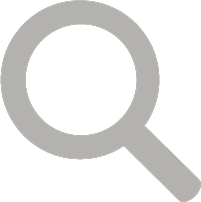A nuptial male Spotfin Chub. Photo by ©Maddie Cogar
Two Spotfin Chubs swimming along the stream bottom. Photo by ©Maddie Cogar
Fact File
Scientific Name: Erimonax monachus
Classification: Fish, Order Cypriniformes, Family Cyprinidae
Conservation Status:
- Federally Threatened in the U.S.
- State Threatened in Virginia
- Species of Greatest Conservation Need-Tier 1b on the Virginia Wildlife Action Plan
Size: Spotfin Chub can grow to about 3.75 inches in length
Life Span: Spotfin Chub can live for about 4 years
Distribution
In Virginia, the Spotfin Chub currently inhabits the Holston Rivers of the Upper Tennessee River basin. Historically, the species also inhabited the Clinch and Powell watersheds.
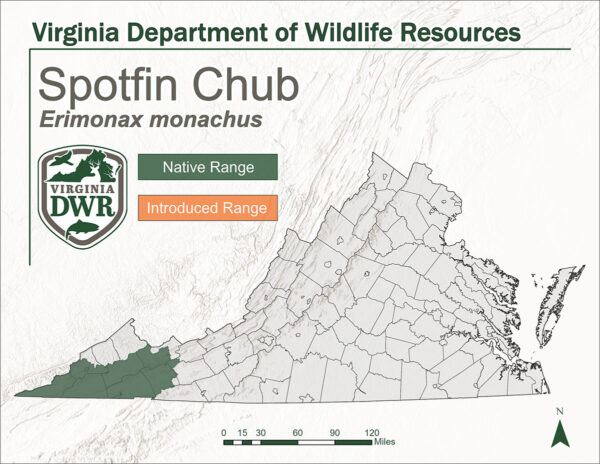
Identifying Characteristics

- Elongate body shape with a long snout and a small eye
- Large and distinctly shaped spot at the base of the caudal fin
- Terminal mouth barbels
- 8 anal fin rays
- Nuptial males may be turquoise to royal blue in color
Cyprinidae Characteristics and Anatomical Terms
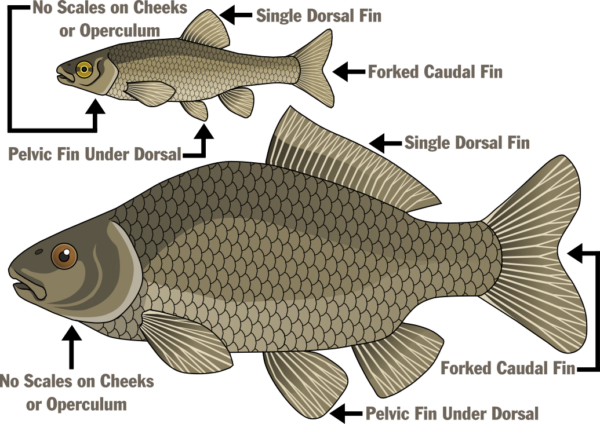
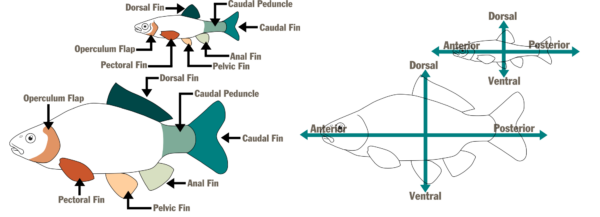
Illustrations by ©Makayla DeVivo – DWR
Diet
Spotfin Chubs are insectivores and primarily consume benthic macroinvertebrates.

A Spotfin Chub exploring the benthic zone for food. Photo by ©Maddie Cogar – DWR
Habitat
The Spotfin Chub requires clean water, swift moving currents, and a diversity of exposed substrates. Their populations have been negatively impacted by pollution, habitat fragmentation from impoundments, stream channelization, and excessive sedimentation.
Spotfin Chubs are right at home in the swift current. Video by ©Maddie Cogar – DWR
Reproduction
Spotfin Chubs spawn in the early summer and reach sexual maturity at age 2. Spawning pairs will use nooks and cracks in bedrock shelves or spaces between cobbles and boulders as their nesting areas.
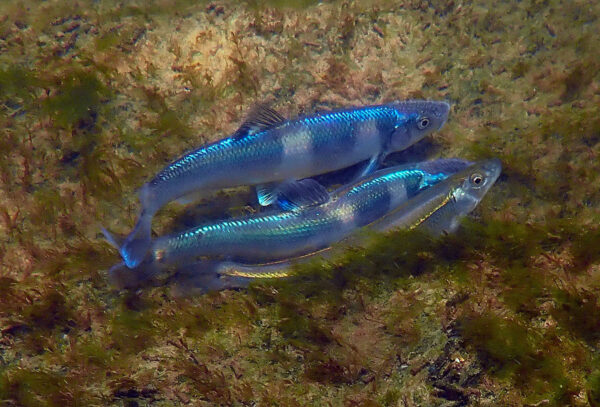
Nuptial Spotfin Chubs. Photo by ©Michael Pinder – DWR
Special Considerations
It is illegal to target Spotfin Chub by angling. The Spotfin Chub is listed as an threatened species under federal and Virginia law. It is a violation of state and federal law to harass, harm, or take any Spotfin Chub.
For the definitions of take, harass, and harm, see 4 VAC 15-20-140.
Last updated: August 3, 2025
The Virginia Department of Wildlife Resources Species Profile Database serves as a repository of information for Virginia’s fish and wildlife species. The database is managed and curated by the Wildlife Information and Environmental Services (WIES) program. Species profile data, distribution information, and photography is generated by the Virginia Department of Wildlife Resources, State and Federal agencies, Collection Permittees, and other trusted partners. This product is not suitable for legal, engineering, or surveying use. The Virginia Department of Wildlife Resources does not accept responsibility for any missing data, inaccuracies, or other errors which may exist. In accordance with the terms of service for this product, you agree to this disclaimer.

